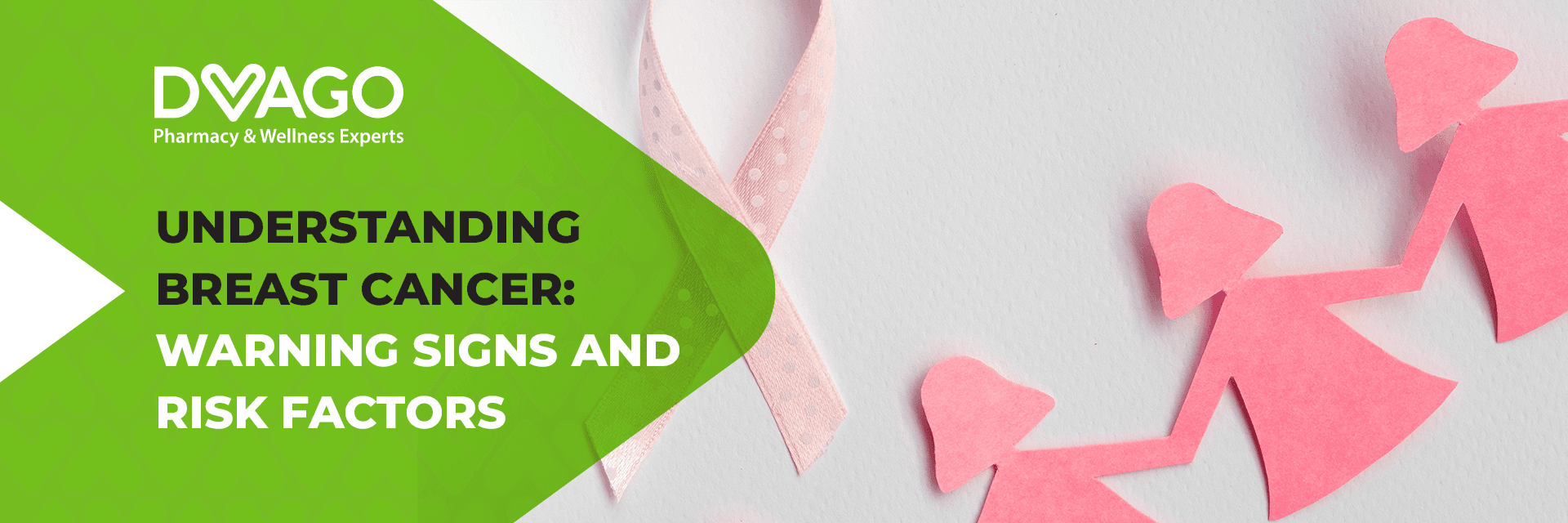
Understanding Breast Cancer: Warning Signs And Risk Factors
Breast cancer is still an alarming issue in Pakistan as out of 1000 female deaths 2 are due to breast cancer and there are at least 109 breast cancer deaths in Pakistan everyday and 40160 deaths in a year. There is also one thing that is concerning – namely, that 90,000 new cases of breast cancer occur every year. These startling statistics substantiate why women need to be informed of breast cancer and the risks that they are prone to encounter.
Knowing these indications could go a long method in preventing the situation, grasping the factors that make a difference and applying proper ways of managing important outcomes can reduce the impact. This paper will attempt to look at the important factors for breast cancer to help the female readers gain knowledge to embrace healthier lifestyles.
- New lump or mass, It can be painless, hard, and irregular, but sometimes, it might be tender, soft, or rounded.
- Changes in breast size, the breast size, along with its texture and shape, might feel different. You may also experience heaviness, firmness, or hardening in your breast.
- Swelling, Even without a distinct lump, swelling of some part or all of the breasts can be a sign.
- Skin changes, Look out for scaliness, dimpling, redness, or irritation.
- Nipple changes, include discharge, retraction, change in appearance, or pain.
- Areas near the Breast, Swollen lymph nodes, or pain in the armpit or collarbone area.
- Women should conduct self-examinations monthly, especially for young girls and women. Regular clinical breast exams are also crucial, with the frequency increasing for women above 40 years. Mammogram screenings are recommended annually for early detection, as breast cancer might not always exhibit noticeable symptoms.

- Breast cancer is significantly more common in women; 1 in 8 women is at risk for breast cancer.
- Breast cancer is often diagnosed after the age of 55.
- Breast cancer risk increases if a close family member is diagnosed, especially before 50.
- Early menstruation, late menopause, or no childbirth can increase the risk.
- Lack of physical activity or sedentary lifestyles heighten the risk.
- Poor diet and the use of processed food contribute to the risk of breast cancer.
- Being overweight or obese, especially after menopause, increases the risk.
- Use of hormone replacement therapy increases the risk, especially if it is used for prolonged periods.
- Both alcohol consumption and smoking, especially in younger women, are linked to higher risks.

Diagnostic Procedures:
Ultrasound: Helps distinguish between cysts and solid masses, aiding in detection, especially for dense breasts.
Mammogram: Annual screening is vital for women above 40, based on health conditions.
MRI: High-risk individuals might require both MRI and mammogram screenings yearly.
Biopsy: Essential for confirming cancer presence, and providing accurate diagnosis.
It is also true that a breast cancer diagnosis can place physical pressure. Emotional support, one should involve people close to them, fellow breast cancer patients so that each can share their experiences and strengthen each other. Turn into action as often as possible; exercise helps to maintain good mental health and decreases anxiety levels. Improper intake of foods, lack of sleeping habits as well as lack of exercise also affects correct stress tackling.
I would like to mention the fact that breast lumps are not always malignant. If a person is ever in doubt or if something seems wrong with her breasts, she should seek medical advice immediately. It is also worth to note that when there is early discovery and treatment, this has greater chances of a successful outcome. Never downplay the issue, be on the lookout and always take your breast health seriously.

